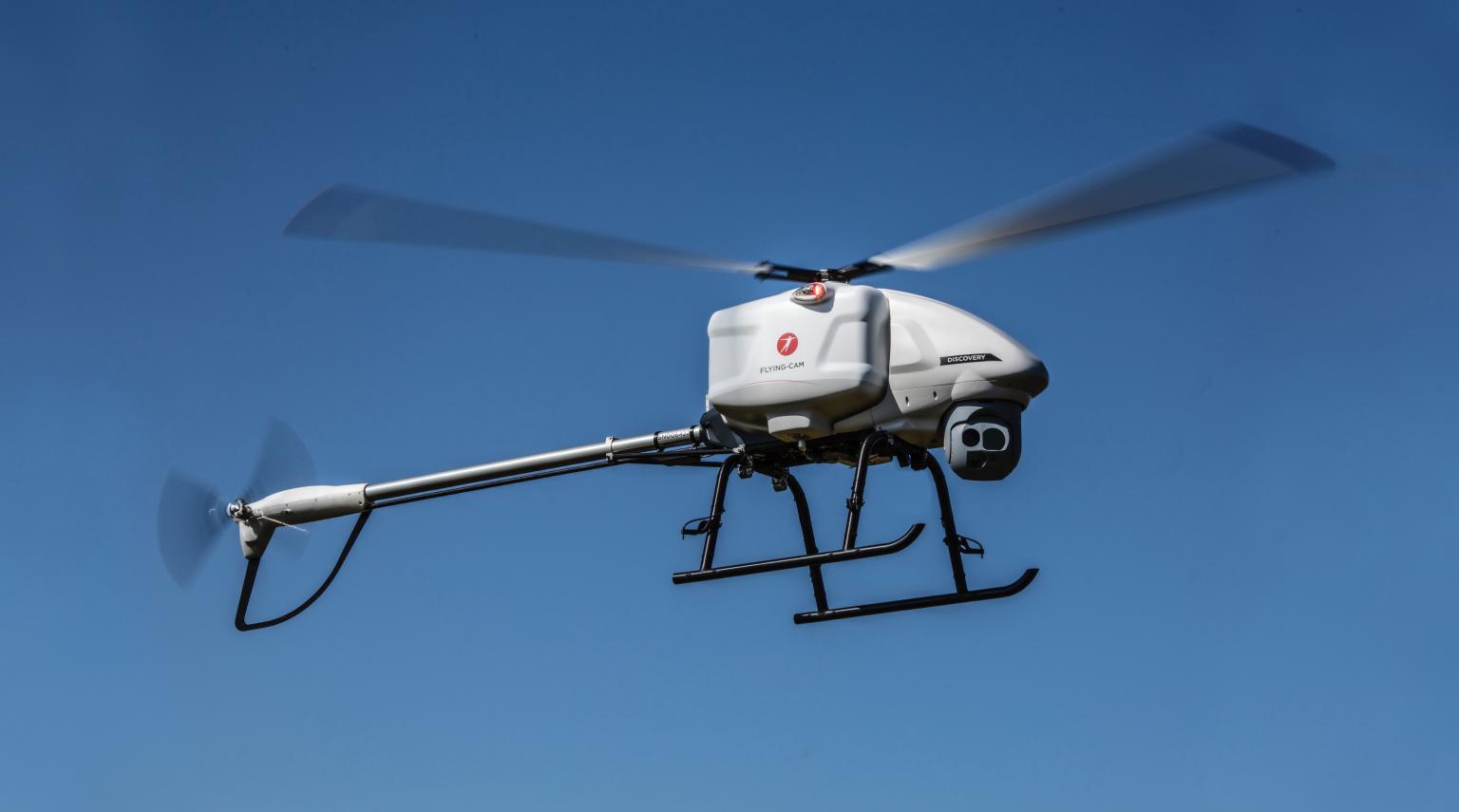
Unmanned helicopter and professional drone developer Flying-Cam has unveiled its newest unmanned aircraft system, the Discovery.
To complete the construction of the drone, the firm turned to 3D printing materials and services provider CRP Technology to manufacture the drone’s tail rotor gear box housing, which is the main housing attached to the main tail boom.
Flying-Cam opted for CRP Technology’s additive manufacturing capabilities due to its ability to create lightweight yet rigid, physical and aerodynamic protection for the Discovery’s components.
“With the potential drones offer the civil market, and the interest in Beyond Visual Line Of Sight (BVLOS) flights, we felt it was the right time to develop a drone that could not only capture beautiful imagery for movies, television shows and commercials, but that could carry a variety of payloads to collect the necessary data for other industrial applications,” said Emmanuel Previnaire, founder and CEO of Flying-Cam.
“The result was the creation of the ‘super drone’ named Discovery, fully integrated with state-of-the-art sensors carefully chosen to match the supreme platform quality for a variety of applications ranging from the entertainment industry, homeland security, earth monitoring, and general high precision remote sensing.”
Lightweighting with 3D printing
The aim of the project was to design and produce lightweight, robust protection for the Discovery’s tail rotor actuators and GPS antenna. With Flying-Cam’s requirements and standards in mind, CRP Technology leveraged its powder bed fusion (PBF) 3D printing technology for fibre-reinforced composite polymers and its Windform XT 2.0 material.
Windform XT 2.0 is a carbon fibre-filled polyamide 3D printing composite suited to demanding applications within industries like motorsports, aerospace, and UAVs. The material features an 8% increase in mechanical strength, 22% improvement in tensile modulus, and a 46% increase in elongation at break over its previous formula Windform XT.
“The component was planned to be clamped on the tail boom, and support also the carbon plate used as a tail rotor ground protection,” said Previnaire. “For this reason, a good stress resistance was needed. The clamping strength depends on the construction material’s capabilities. We have chosen Windform XT 2.0 as it allows us to achieve it with a good weight-resistance ration.”
According to him, the most innovative aspect of enlisting CRP’s 3D printing process and composite materials is the free shape design offered by the combination, which is particularly important for optimising the Discovery’s aerodynamics and in creating complex wiring channels inside the component with strong attachment points, printed in a single piece.
“Being more specific, the PBF process and Windform materials allow the creation of hollow parts with a lot of functional details, such as fixation nuts integration and cable attachment points,” Previnaire added. “This is a very added value that perfectly suited our purposes and standards.”
An ongoing partnership
This is not the first time Flying-Cam and CRP Technology have worked together to optimise the design and manufacture of the former’s drone components. The companies first teamed up to produce Flying-Cam’s Sarah 3.0 electric Vertical Take-Off and Landing (VTOL) UAV several years ago, which went on to win two Oscar Awards and one Emmy Award.
“In the past, you could stay in business with a product for 15 years,” said Previnaire. “Now, every six months you need to update. For the reason, we designed a platform that follows the pace of technology. To keep up with the ever-changing technology in the UAS industry, and to obtain the highest levels of reliability, safety, precision and adaptability to take on various missions, such as mapping and inspections, we rely on partners who not only offer cutting edge technological solutions, but are forerunners of technological innovations at the maximum level, and CRP Technology is among them.”

















